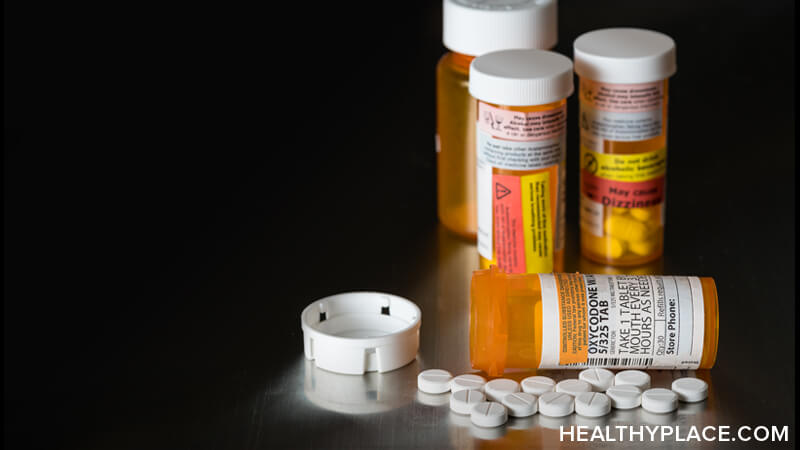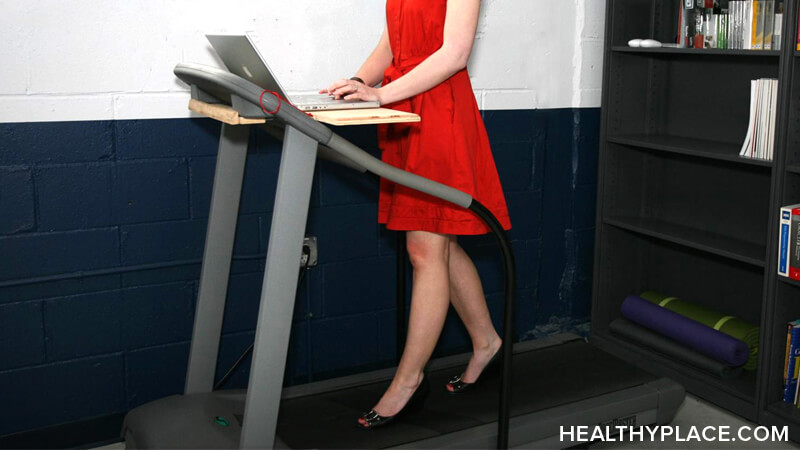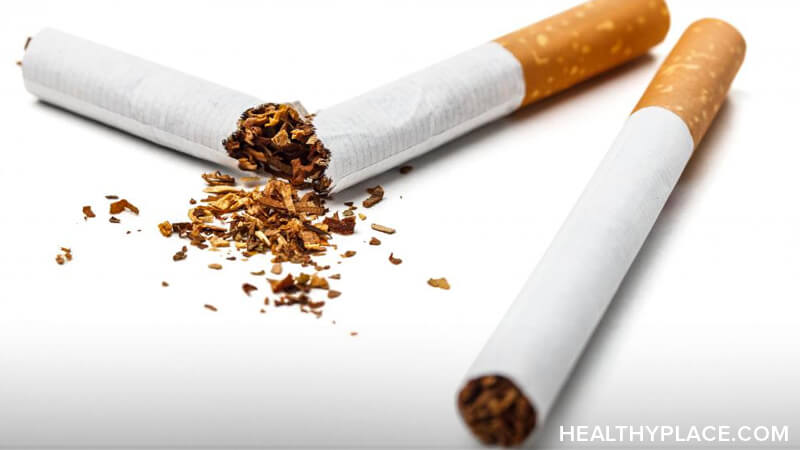
Opioids Epidemic: What You Need to Know
Associated Press. (2016). Drug overdoses now kill more Americans than guns. CBS News. Retrieved from
https://www.cbsnews.com/news/drug-overdose-deaths-heroin-opioid-prescription-painkillers-more-than-guns/
Foreman, J. (2014). A Nation in pain: Healing our biggest health problem. NY: Oxford University Press.
Full House Committee on Oversight and Government Reform. (2016). American’s heroin and opioid
abuse epidemic. Retrieved from https://oversight.house.gov/hearing/americas-heroin-and-opioid-abuse-epidemic/
Gusovsky, D. (2016). Americans consume vast majority of the world’s opioids. CNBC. Retrieved from
https://www.cnbc.com/2016/04/27/americans-consume-almost-all-of-the-global-opioid-supply.html
Information sheet on opioid overdose. (2014). World Health Organization. Retrieved from
http://www.who.int/substance_abuse/information-sheet/en/
Kuhn, C., Swartzwelder, S. & Wilson, W. (2008). Buzzed: The straight facts about the most used and
abused drugs from alcohol to Ecstasy. NY: W.W. Norton & Company.
Nolan, D. & Amico, C. (2016). Chasing heroin: How bad is the epidemic? Frontline. Retrieved from
https://www.pbs.org/wgbh/frontline/article/how-bad-is-the-opioid-epidemic/
Opioid Crisis. (2017). National Institute of Health/National Institute on Drug Abuse. Retrieved from
https://www.drugabuse.gov/drugs-abuse/opioids/opioid-crisis
What are Opioid Drugs?
Dovey, D. (2017). What are opioids and how did we get here? Newsweek. Retrieved from:
https://www.msn.com/en-us/health/medical/what-are-opioids-and-how-did-we-get-here/ar-AAuf0CX
Foreman, J. (2014). A Nation in pain: Healing our biggest health problem. NY: Oxford University Press.
Opiates. (n.d.) Opiates.com. Retrieved from https://www.opiate.com/opiates/
Opioids. (n.d.) National Institute of Health/National Institute on Drug Abuse. Retrieved from
https://www.drugabuse.gov/drugs-abuse/opioids
Opiates/Opioids. (n.d.). The National Alliance of Advocates for Buprenorphine Treatment. Retrieved from
https://www.naabt.org/education/opiates_opioids.cfm
Types of Opioids and Opioids Examples
Bellum, S. (2014). Real teens ask: What are the different types of opioids? National Institute on
Drug Abuse for Teens. Retrieved from https://teens.drugabuse.gov/blog/post/real-teens-ask-what-are-different-types-opioids-0
Dovey, D. (2017). What are opioids and how did we get here? Newsweek. Retrieved from:
https://www.msn.com/en-us/health/medical/what-are-opioids-and-how-did-we-get-here/ar-AAuf0CX
Foreman, J. (2014). A Nation in pain: Healing our biggest health problem. NY: Oxford
University Press.
Kuhn, C., Swartzwelder, S. & Wilson, W. (2008). Buzzed: The straight facts about the most used
and abused drugs from alcohol to Ecstasy. NY: W.W. Norton & Company.
Mandal, A. (n.d.). Opioid types. News Medical Life Sciences. Retrieved from
https://www.news-medical.net/health/Opioid-Types.aspxv
Nolan, D. & Amico, C. (2016). Chasing heroin: How bad is the epidemic? Frontline. Retrieved
From https://www.pbs.org/wgbh/frontline/article/how-bad-is-the-opioid-epidemic/
Opiate agonist and antagonist drugs. (n.d.). Opiates.com. Retrieved from
https://www.opiates.com/opiate-agonist/
Opiates/Opioids. (n.d.). The National Alliance of Advocates for Buprenorphine Treatment.
Retrieved from https://www.naabt.org/education/opiates_opioids.cfm
Opioid Crisis. (2017). National Institute of Health/National Institute on Drug Abuse. Retrieved
from https://www.drugabuse.gov/drugs-abuse/opioids/opioid-crisis
Opioids vs. Opiates: What’s the Difference?
Dovey, D. (2017). What are opioids and how did we get here? Newsweek. Retrieved from:
https://www.msn.com/en-us/health/medical/what-are-opioids-and-how-did-we-get-here/ar-AAuf0CX
Kuhn, C., Swartzwelder, S. & Wilson, W. (2008). Buzzed: The straight facts about the most used and
abused drugs from alcohol to Ecstasy. NY: W.W. Norton & Company.
Labonville, S. (2017). Opiate, opioid, narcotic — What’s the difference? IWP, The Patient Advocate
Pharmacy. Retrieved from http://info.iwpharmacy.com/opiate-opioid-narcotic-whats-the-difference
Opiate receptors. (n.d.) Opiates.com. Retrieved from https://www.opiates.com/opiate-receptors/
Opiate receptors. (n.d.) Stop Your Addiction. Retrieved from http://www.stopyouraddiction.com/drug-information/opiate/opiate-receptors/
Opiates. (n.d.) Opiates.com. Retrieved from https://www.opiate.com/opiates/
Opiates vs. opioids. (n.d.) Opiates.com Retrieved from http://opium.com/derivatives/opiate-vs-opioid-whats-difference/
Opiates/Opioids. (n.d.). The National Alliance of Advocates for Buprenorphine Treatment. Retrieved
From https://www.naabt.org/education/opiates_opioids.cfm
Opioids. (n.d.) National Institute of Health/National Institute on Drug Abuse. Retrieved from https://www.drugabuse.gov/drugs-abuse/opioids
Narcotics vs. Opioids: Are Opioids Narcotics?
Drug fact sheet: Narcotics. (n.d.) Drug Enforcement Administration. Retrieved from https://www.dea.gov/druginfo/drug_data_sheets/Narcotics.pdf
Foreman, J. (2014). A Nation in pain: Healing our biggest health problem. NY: Oxford University Press.
Kuhn, C., Swartzwelder, S. & Wilson, W. (2008). Buzzed: The straight facts about the most used and
abused drugs from alcohol to Ecstasy. NY: W.W. Norton & Company.
Labonville, S. (2017). Opiate, opioid, narcotic — What’s the difference? IWP, The Patient Advocate
Pharmacy. Retrieved from http://info.iwpharmacy.com/opiate-opioid-narcotic-whats-the-difference
Pain medications—narcotics. (n.d.). National Institute of Health US National Library of Medicine,
Medline Plus. Retrieved from https://medlineplus.gov/ency/article/007489.htm
How Do Opioids Work? Mechanism of Action
Bellum, S. (2014). Real teens ask: What are the different types of opioids? National Institute on Drug
Abuse for Teens. Retrieved from https://teens.drugabuse.gov/blog/post/real-teens-ask-what-are-different-types-opioids-0
Chahl, L.A. (1996). Opioids—mechanisms of action. Australian Prescriber. Retrieved from
https://www.nps.org.au/australian-prescriber/articles/opioids-mechanisms-of-action
Dovey, D. (2017). What are opioids and how did we get here? Newsweek. Retrieved from:
https://www.msn.com/en-us/health/medical/what-are-opioids-and-how-did-we-get-here/ar-AAuf0CX
Drug fact sheet: Narcotics. (n.d.) Drug Enforcement Administration. Retrieved from
https://www.dea.gov/druginfo/drug_data_sheets/Narcotics.pdf
Foreman, J. (2014). A Nation in pain: Healing our biggest health problem. NY: Oxford University Press.
Kuhn, C., Swartzwelder, S. & Wilson, W. (2008). Buzzed: The straight facts about the most used and
abused drugs from alcohol to Ecstasy. NY: W.W. Norton & Company.
Mechanism of Action. (n.d.) National Institute on Drug Abuse for Teachers. Retrieved from
https://teens.drugabuse.gov/teachers/mind-over-matter/teachers-guide/opiates/mechanism-action
Opiate receptors. (n.d.) Opiates.com. Retrieved from https://www.opiates.com/opiate-receptors/
Opiate receptors. (n.d.) Stop Your Addiction. Retrieved from http://www.stopyouraddiction.com/drug-information/opiate/opiate-receptors/
Opiates/Opioids. (n.d.). The National Alliance of Advocates for Buprenorphine Treatment. Retrieved
From https://www.naabt.org/education/opiates_opioids.cfm
Pain medications—narcotics. (n.d.). National Institute of Health US National Library of Medicine,
Medline Plus. Retrieved from https://medlineplus.gov/ency/article/007489.htm
Complete List of Opioids - Brand Name, Street Name, Strength
.Adams, M. (2017). A guide to addictive opiates: List of opioids strongest to weakest. White Sands
Treatment. Retrieved form https://whitesandstreatment.com/2017/09/11/list-of-opioids-strongest-to-weakest/
Chandler, S. (2017). Opiate drug strengths in order. Livestrong.com. Retrieved from https://www.livestrong.com/article/161356-opiate-drug-strengths-in-order/
Kuhn, C., Swartzwelder, S. & Wilson, W. (2008). Buzzed: The straight facts about the most used and
abused drugs from alcohol to Ecstasy. NY: W.W. Norton & Company.
Mammadli, R. (n.d.). List of painkillers. Health Recovery. Retrieved from https://iytmed.com/list-of-painkillers/
Opioid Potency Comparison. (n.d.). eMedicine Health. Retrieved from https://www.emedicinehealth.com/opioid_potency_comparison/article_em.htm
Street names for opiates. (n.d.). Opium.org. Retrieved from
http://www.opium.org/street-names-opiates.html
Opioids Tolerance (to Pain Meds): Signs, Causes, Effects
Burns, L.H. (2005). Recent developments in pain research. Kerala, IN: Research Signpost. Retrieved
from http://www.paintrials.com/publications/Capasso8.pdf
Foreman, J. (2014). A Nation in pain: Healing our biggest health problem. NY: Oxford University Press.
Kuhn, C., Swartzwelder, S. & Wilson, W. (2008). Buzzed: The straight facts about the most used and
abused drugs from alcohol to Ecstasy. NY: W.W. Norton & Company.
McAllister, M. (2014). Tolerance to opioid pain medications. Institute for Chronic Pain. Retrieved from
http://www.instituteforchronicpain.org/treating-common-pain/tolerance-to-opioid-pain-medications
Opiate tolerance. (n.d.) Opiates.com. Retrieved from https://www.opiate.com/tolerance/
Opioid Dependence vs. Addiction - Symptoms. Treatment
Foreman, J. (2014). A Nation in pain: Healing our biggest health problem. NY: Oxford University Press.
Opioid dependence. (n.d.). drugs.com. Retrieved from https://www.drugs.com/cg/opioid-dependence.html
Painkillers, narcotic misuse, and addiction (n.d.) WebMD. Retrieved from https://www.webmd.com/mental-health/addiction/painkillers-and-addiction-narcotic-abuse#1-1
Physical vs. psychological dependency: What’s the difference? (2014). Promises Treatment Centers
Retrieved from https://www.promises.com/articles/physical-vs-psychological-dependency/
Opioids Side Effects — Short and Long-Term on Brain and Body
Block, S. (2017). What the opioid epidemic looks like on the screen of a brain scan. The Washington
Post. Retrieved from https://www.washingtonpost.com/outlook/what-the-opioid-epidemic-looks-ike-on-the-screen-of-a-brain-scan/2017/12/01/2d642caa-d4c0-11e7-95bf df7c19270879_story.html?utm_term=.9f44389de3c0
The effects of opiates on your body. (n.d.) DrugAbuse.com. Retrieved from https://drugabuse.com/featured/the-effects-of-opiates-on-the-body/
Foreman, J. (2014). A Nation in pain: Healing our biggest health problem. NY: Oxford University Press.
Kuhn, C., Swartzwelder, S. & Wilson, W. (2008). Buzzed: The straight facts about the most used and
abused drugs from alcohol to Ecstasy. NY: W.W. Norton & Company.
Opiates/Opioids. (n.d.). The National Alliance of Advocates for Buprenorphine Treatment. Retrieved
From https://www.naabt.org/education/opiates_opioids.cfm
Opioids Overdose: Symptoms and Treatment
Foreman, J. (2014). A Nation in pain: Healing our biggest health problem. NY: Oxford University Press.
Information sheet on opioid overdose. (2014). World Health Organization. Retrieved from
http://www.who.int/substance_abuse/information-sheet/en/
Kuhn, C., Swartzwelder, S. & Wilson, W. (2008). Buzzed: The straight facts about the most used and
abused drugs from alcohol to Ecstasy. NY: W.W. Norton & Company.
Opiates/Opioids. (n.d.). The National Alliance of Advocates for Buprenorphine Treatment. Retrieved
From https://www.naabt.org/education/opiates_opioids.cfm
Opioids Withdrawal: How Bad is It? Symptoms, Treatment
Case-Lo, C. (2017). Withdrawing from opiates and opioids. Healthline. https://www.healthline.com/health/opiate-withdrawal
Foreman, J. (2014). A Nation in pain: Healing our biggest health problem. NY: Oxford University Press.
Kuhn, C., Swartzwelder, S. & Wilson, W. (2008). Buzzed: The straight facts about the most used and
abused drugs from alcohol to Ecstasy. NY: W.W. Norton & Company.
Opiate receptors. (n.d.) Stop Your Addiction. Retrieved from http://www.stopyouraddiction.com/drug-information/opiate/opiate-receptors/
Opiates/Opioids. (n.d.). The National Alliance of Advocates for Buprenorphine Treatment. Retrieved
From https://www.naabt.org/education/opiates_opioids.cfm
Opiate withdrawal timelines, symptoms, and treatment. (n.d.) American Addiction Centers. Retrieved from https://americanaddictioncenters.org/withdrawal-timelines-treatments/opiate/
Wesson, D.R. & Ling, W. (2003). The Clinical Opiate Withdrawal Scale (COWS). Journal of
Psychoactive Drugs, 35(2), 253-9. Retrieved from https://www.drugabuse.gov/sites/default/files/files/ClinicalOpiateWithdrawalScale.pdf
What is Opioid Addiction and Why are Opioids so Addictive?
Foreman, J. (2014). A Nation in pain: Healing our biggest health problem. NY: Oxford University Press.
Kuhn, C., Swartzwelder, S. & Wilson, W. (2008). Buzzed: The straight facts about the most used and
abused drugs from alcohol to Ecstasy. NY: W.W. Norton & Company.
Opiate receptors. (n.d.) Stop Your Addiction. Retrieved from http://www.stopyouraddiction.com/drug-information/opiate/opiate-receptors/
Opioid crisis. (2017). National Institute of Health/National Institute on Drug Abuse. Retrieved from https://www.drugabuse.gov/drugs-abuse/opioids/opioid-crisis
Symptoms of Opioid Addiction
Information sheet on opioid overdose. (2014). World Health Organization. Retrieved from http://www.who.int/substance_abuse/information-sheet/en/
Kuhn, C., Swartzwelder, S. & Wilson, W. (2008). Buzzed: The straight facts about the most used and
abused drugs from alcohol to Ecstasy. NY: W.W. Norton & Company.
Opiate Addiction. (n.d.) Addictions. Retrieved from https://www.addictions.com/opiate/
Symptoms of opioid addiction. (n.d.) Healthgrades: Right Diagnosis. Retrieved from http://www.rightdiagnosis.com/o/opioid_addiction/symptoms.htm
Where to Find Help for Opioid Addiction
Behavioral Health Treatment Services Locator (n.d.). Substance Abuse and Mental Health Services
Administration (SAMHSA). Retrieved from https://findtreatment.samhsa.gov/
Drug abuse hotlines. (n.d.) DrugAbuse.com. Retrieved from https://drugabuse.com/library/drug-abuse-hotlines/
Foreman, J. (2014). A Nation in pain: Healing our biggest health problem. NY: Oxford University Press.
Preidt, R. (2017). Opioid abusers at higher death risk when addiction specialists not part of care.
MedicineNet. Retrieved from https://www.medicinenet.com/script/main/art.asp?articlekey=203040
Rogers, A. (n.d.) Opiate hotlines. DrugAbuse.com. Retrieved from https://drugabuse.com/library/opiate-hotlines/
Treatment for Opiates Addiction: Medication, Therapy
Cunningham, C.O. (2015). Opioid addiction treatment options. The Doctor’s Tablet: Albert Einstein
College of Medicine. Retrieved from http://blogs.einstein.yu.edu/opioid-addiction-treatment-options/
Foreman, J. (2014). A Nation in pain: Healing our biggest health problem. NY: Oxford University Press.
Information sheet on opioid overdose. (2014). World Health Organization. Retrieved from http://www.who.int/substance_abuse/information-sheet/en/
Kuhn, C., Swartzwelder, S. & Wilson, W. (2008). Buzzed: The straight facts about the most used and
abused drugs from alcohol to Ecstasy. NY: W.W. Norton & Company.
Medication assisted treatment for opioid use disorders: Overview of the evidence. (2015). Alcohol &
Drug Abuse Institute, University of Washington. Retrieved from http://adai.uw.edu/pubs/infobriefs/MAT.pdf
Misuse of prescription drugs. (n.d.) National Institute of Health: National Institute on Drug Abuse.
Retrieved from https://www.drugabuse.gov/publications/research-reports/misuse-prescription-drugs/how-can-prescription-drug-addiction-be-treated
Opioid crisis. (2017). National Institute of Health/National Institute on Drug Abuse. Retrieved from https://www.drugabuse.gov/drugs-abuse/opioids/opioid-crisis
List of Opioids Prescription Painkillers: Uses, Abuse
Chandler, S. (2017). Opiate drug strengths in order. Livestrong.com. Retrieved from https://www.livestrong.com/article/161356-opiate-drug-strengths-in-order/
Foreman, J. (2014). A Nation in pain: Healing our biggest health problem. NY: Oxford University Press.
Kuhn, C., Swartzwelder, S. & Wilson, W. (2008). Buzzed: The straight facts about the most used and abused drugs from alcohol to Ecstasy. NY: W.W. Norton & Company.
List of pain relief medications. (2017). eMedExpert. Retrieved from: http://www.emedexpert.com/lists/pain-meds.shtml#5
Opioid (narcotic) pain medications. (n.d.) WebMD. Retrieved from https://www.webmd.com/pain-management/guide/narcotic-pain-medications#1
Opioids for Depression and Anxiety: Are They Effective?
Fels, A. (2016). Are Opioids the Next Anti-Depressant? New York Times. Retrieved from https://www.nytimes.com/2016/06/05/opinion/sunday/are-opioids-the-next-antidepressant.html
Kuhn, C., Swartzwelder, S. & Wilson, W. (2008). Buzzed: The straight facts about the most used and abused drugs from alcohol to Ecstasy. NY: W.W. Norton & Company.
Opiate receptors. (n.d.) Opiates.com. Retrieved from https://www.opiates.com/opiate-receptors/
Sher, L. (1998). The role of the endogenous opioid system in the pathogenesis of anxiety disorders
(Abstract). Med Hypothesis, 50(6), 473-4. Retrieved from https://www.opioids.com/anxiety/index.html
Wilson, M. A. & Junor, L. (2008). The role of amygdalar mu opioid receptors in anxiety-related responses in two rat models. Neruopsychopharmacology, 33(12), 2957-2968. Retrieved from https://www.ncbi.nlm.nih.gov/pmc/articles/PMC2705758/
Woodward, B. (2016). Opioids to treat depression: The jury is still out. Psychiatric Times. Retrieved http://www.psychiatrictimes.com/major-depressive-disorder/opioids-treat-depression-jury-out
Opioids Deaths: Yes, Opioids Can Kill You
Brouhard, R. (2017). Understanding opioid overdoses. Verywell. Retrieved from https://www.verywell.com/how-does-an-opioid-overdose-kill-1298843
Associated Press. (2016). Drug overdoses now kill more Americans than guns. CBS News. Retrieved
From https://www.cbsnews.com/news/drug-overdose-deaths-heroin-opioid-prescription-painkillers-more-than-guns/
Brouhard, R. (2017). Understanding opioid overdoses. Verywell. Retrieved from https://www.verywell.com/how-does-an-opioid-overdose-kill-1298843
Foreman, J. (2014). A Nation in pain: Healing our biggest health problem. NY: Oxford University Press.
Full House Committee on Oversight and Government Reform. (2016). American’s heroin and opioid
abuse epidemic. Retrieved from https://oversight.house.gov/hearing/americas-heroin-and-opioid-abuse-epidemic/
Kuhn, C., Swartzwelder, S. & Wilson, W. (2008). Buzzed: The straight facts about the most used and
abused drugs from alcohol to Ecstasy. NY: W.W. Norton & Company.
Nolan, D. & Amico, C. (2016). Chasing heroin: How bad is the epidemic? Frontline. Retrieved from
https://www.pbs.org/wgbh/frontline/article/how-bad-is-the-opioid-epidemic/
Opioids and Alcohol: A Dangerous Combination
Concurrent alcohol and opiate abuse. (n.d.) DrugAbuse.com. Retrieved from https://drugabuse.com/library/concurrent-alcohol-and-opiate-abuse/
Dangers of mixing alcohol and opiates, including hydrocodone, oxycodone, and morphine. (n.d.)
American Addiction Centers. Retrieved from https://americanaddictioncenters.org/alcoholism-treatment/mixing-opiates/
Information sheet on opioid overdose. (2014). World Health Organization. Retrieved from http://www.who.int/substance_abuse/information-sheet/en/
Kuhn, C., Swartzwelder, S. & Wilson, W. (2008). Buzzed: The straight facts about the most used and abused drugs from alcohol to Ecstasy. NY: W.W. Norton & Company.
Preidt, R. (2017). Opioids and alcohol a dangerous cocktail. WebMD. Retrieved from https://www.webmd.com/mental-health/addiction/news/20170208/opioids-and-alcohol-a-dangerous-cocktail








